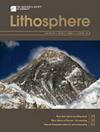The Role of Isostasy in the Evolution and Architecture of Fold and Thrust Belts
IF 1.7
4区 地球科学
Q3 GEOCHEMISTRY & GEOPHYSICS
引用次数: 0
Abstract
Warmer conditions prevalent in the hinterland of orogenic systems facilitate local ductile flow underneath the surface load, making Airy-like local isostasy more prevalent in these domains. In contrast, flexural isostasy better describes the regional response to surface loading of more rigid lithospheres. Here, we explore how the interaction between horizontal tectonic mass transfer and vertical isostatic mass transfer, through either elastic flexure or viscous flow, impacts the overall architecture of fold and thrust belts. We compare numerical models of fold and thrust belts under either an Airy-like ductile isostasy boundary condition or a flexural-like regional isostasy boundary condition. Our experiments suggest that when ductile flow is involved in accommodating isostatic adjustment, subsidence is rather local, larger, and results in narrower, less elevated fold-thrust belts with a complex internal architecture consisting of prominent steeply dipping faults. When isostatic subsidence is controlled by lithospheric flexure, the tilting of the basement on 10 s of km scale facilitates the outward propagation of fold-thrust belts. The internal architecture is simpler and involves prominent basement-parallel décollements. The outcome is wider fold and thrust belts with higher topographies. A change in lithospheric elastic thickness does not significantly affect fold-thrust belt structural styles. Our results are compared to natural examples from the Subandean zone.均衡作用在褶皱和冲断带演化和构造中的作用
造山系统腹地普遍存在的温暖条件促进了地表负荷下的局部韧性流动,使这些区域中类似airy的局部均衡更加普遍。相比之下,弯曲均衡学说更好地描述了较刚性岩石圈对地表载荷的区域响应。在此,我们探讨了水平构造质量传递和垂直均衡质量传递之间的相互作用,无论是通过弹性弯曲还是粘性流动,如何影响褶皱和冲断带的整体结构。我们比较了褶皱带和冲断带在类airy韧性均衡边界条件和类弯曲区域均衡边界条件下的数值模型。我们的实验表明,当韧性流参与均衡调整时,沉降是相当局部的、较大的,并导致较窄的、不高的褶皱冲断带,其内部构造复杂,由突出的陡倾断层组成。当均衡沉降受岩石圈挠曲控制时,基底在10 s km尺度上的倾斜有利于褶皱冲断带向外扩展。内部结构更简单,包括突出的与地下室平行的danalys组件。其结果是更宽的褶皱和冲断带和更高的地形。岩石圈弹性厚度的变化对褶皱-冲断带构造样式影响不大。我们的结果与来自Subandean带的自然例子进行了比较。
本文章由计算机程序翻译,如有差异,请以英文原文为准。
求助全文
约1分钟内获得全文
求助全文
来源期刊

Lithosphere
GEOCHEMISTRY & GEOPHYSICS-GEOLOGY
CiteScore
3.80
自引率
16.70%
发文量
284
审稿时长
>12 weeks
期刊介绍:
The open access journal will have an expanded scope covering research in all areas of earth, planetary, and environmental sciences, providing a unique publishing choice for authors in the geoscience community.
 求助内容:
求助内容: 应助结果提醒方式:
应助结果提醒方式:


